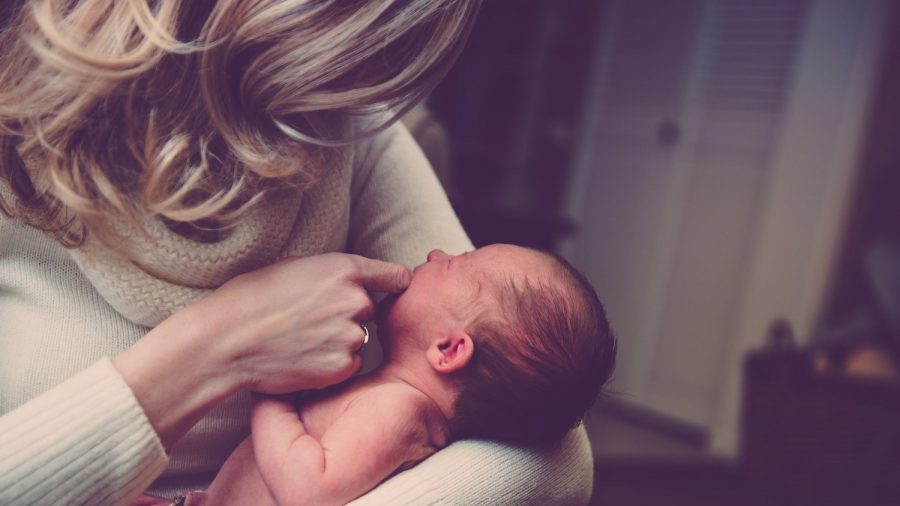A woman in Missouri was surprised at the birth of her “miracle baby” even though she had had both her fallopian tubes removed three years earlier.
Despite having undergone a procedure that doctors assured her would make it impossible for her to conceive, tests confirmed that Elizabeth Kough was pregnant. In March, she gave birth at North Kansas City Hospital to a healthy 7-pound, 6-ounce baby, according to a report by The Kansas City Star.
“I was shocked and I was like, ‘This isn’t in my plan,'” Kough told the Star. “I’m a planner. But now, sometimes the best-laid plans, you need to just do away with those.”
Kough also said that she did not have any in-vitro fertilization (IVF).
“He is a beautiful baby. I am exceptionally lucky to have him in my life,” she said.
An egg normally must travel from the ovaries to the fallopian tube. The sperm and the egg must combine in one of the tubes to make pregnancy possible, according to the Mayo Clinic. Without the tubes, there is little chance of becoming pregnant naturally–IVF would be the only other way to become pregnant.
In 2015, Kough underwent the procedure, called a “bilateral salpingectomy.” Kough has a history of ovarian cancer in her family and the procedure can greatly decrease her risk of having cancer.
At the time she was 35, divorced, and had already had three children.
Her medical record of the surgery, performed in Virginia, was a success, and a pathology record confirmed that the fallopian tubes were taken out of her body. The procedure is regarded widely as one of the most effective forms of birth control.
“When I had the procedure done, they were like, ‘It’s about as close to 100 percent [chance of preventing pregnancy] as you can get,'” she told the Star.
But she became unexpectedly pregnant two years later when she moved to Missouri, the Star reported.
How did Kough’s pregnancy happen? One hypothesis presented in a medical journal in 2007 (pdf) suggested that an egg could, in very rare circumstances, bypass a small space between the ovary and the uterus, if that area had not been completely closed off after the surgery. The egg’s transit is referred to as “transperitoneal migration.”
“I don’t know if he was just a medical miracle and a one-in-a-million chance, or if he was absolutely meant to be,” Kough said. “I’m just a little person. I don’t know about the greater universe and God’s plan for us. But I do know that he’s definitely very special. Special to me and to our family.”
The American College of Obstetricians and Gynecologists says the rate of pregnancy for women who have had partial removal of their fallopian tubes is about 20.1 out of 1,000. The rate is 7.5 out of 1,000 if the fallopian tubes are partially removed immediately after childbirth. But there is not enough data on women who become pregnant after having both their fallopian tubes removed.
Kough had her baby boy, Benjamin, via planned cesarean section. She told the Star that surgeons double-checked whether the tubes were still inside.
“They said, ‘No there’s nothing there. The surgeon did everything correctly. There’s no tubes,’” she said. “So, he truly was a miracle baby.”
Stories of women giving birth naturally after having both their fallopian tubes removed are few and far between, but some have been recorded.
One account was told by Dr. Harley Rotbart, published in 2016 in his book “Miracles We Have Seen.” A woman became pregnant naturally two years after having both her fallopian tubes removed, Rotbart recounted.
“‘How could this be?’ I had personally removed both her fallopian tubes with confirmation from the pathology laboratory … I cannot imagine how her eggs could have made it to the uterus to be fertilized without fallopian tubes to get them there.
“Impossible? Yet it happened. Amanda considered this to be a miracle, and I couldn’t disagree,” he wrote, adding that the woman went on to have a healthy baby girl.
At least two other cases of natural births, one in 2013 and another in 2015, have been reported, where the women gave birth years after their fallopian tubes were fully removed.
There have also been cases of a woman having a natural birth soon after they have had their fallopian tubes removed—one case was reported in 2015 and another reported in 2018. In both cases, doctors suspect that the fertilized egg, or fetus, that was formerly in the fallopian tube had traveled to the uterus before the salpingectomy was carried out.

